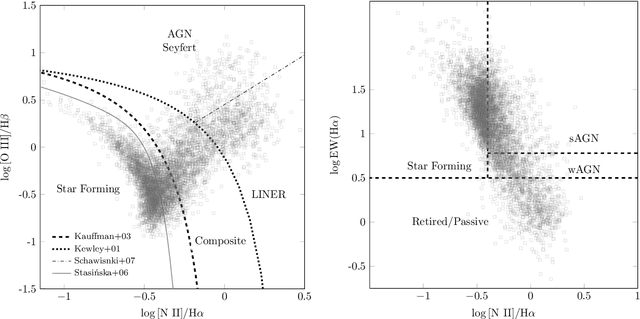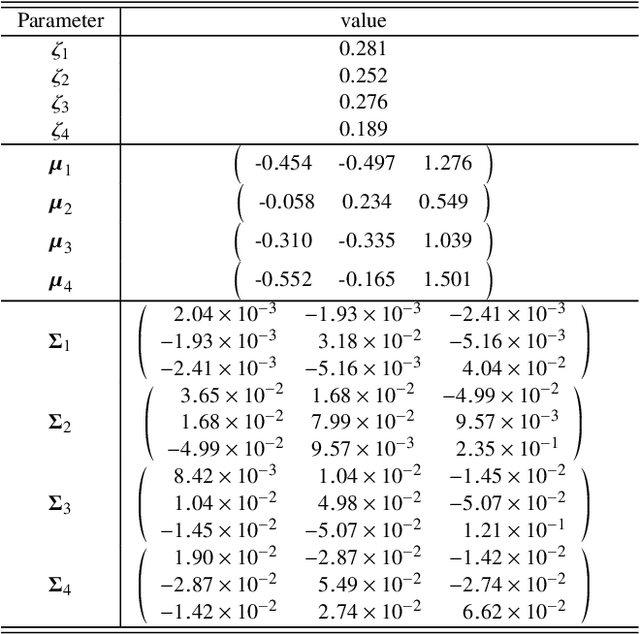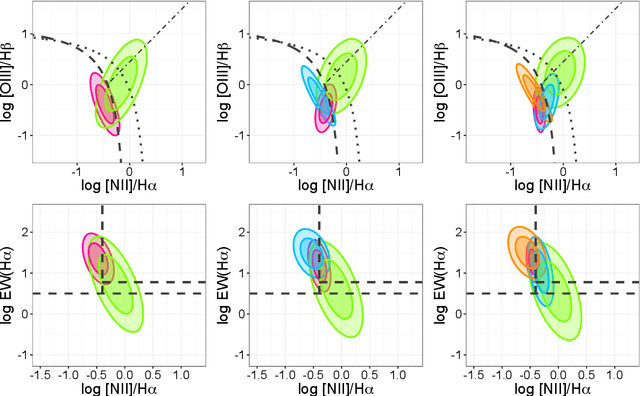P. -Y. Lablanche
A probabilistic approach to emission-line galaxy classification
Aug 18, 2017



Abstract:We invoke a Gaussian mixture model (GMM) to jointly analyse two traditional emission-line classification schemes of galaxy ionization sources: the Baldwin-Phillips-Terlevich (BPT) and $\rm W_{H\alpha}$ vs. [NII]/H$\alpha$ (WHAN) diagrams, using spectroscopic data from the Sloan Digital Sky Survey Data Release 7 and SEAGal/STARLIGHT datasets. We apply a GMM to empirically define classes of galaxies in a three-dimensional space spanned by the $\log$ [OIII]/H$\beta$, $\log$ [NII]/H$\alpha$, and $\log$ EW(H${\alpha}$), optical parameters. The best-fit GMM based on several statistical criteria suggests a solution around four Gaussian components (GCs), which are capable to explain up to 97 per cent of the data variance. Using elements of information theory, we compare each GC to their respective astronomical counterpart. GC1 and GC4 are associated with star-forming galaxies, suggesting the need to define a new starburst subgroup. GC2 is associated with BPT's Active Galaxy Nuclei (AGN) class and WHAN's weak AGN class. GC3 is associated with BPT's composite class and WHAN's strong AGN class. Conversely, there is no statistical evidence -- based on four GCs -- for the existence of a Seyfert/LINER dichotomy in our sample. Notwithstanding, the inclusion of an additional GC5 unravels it. The GC5 appears associated to the LINER and Passive galaxies on the BPT and WHAN diagrams respectively. Subtleties aside, we demonstrate the potential of our methodology to recover/unravel different objects inside the wilderness of astronomical datasets, without lacking the ability to convey physically interpretable results. The probabilistic classifications from the GMM analysis are publicly available within the COINtoolbox (https://cointoolbox.github.io/GMM\_Catalogue/).
 Add to Chrome
Add to Chrome Add to Firefox
Add to Firefox Add to Edge
Add to Edge